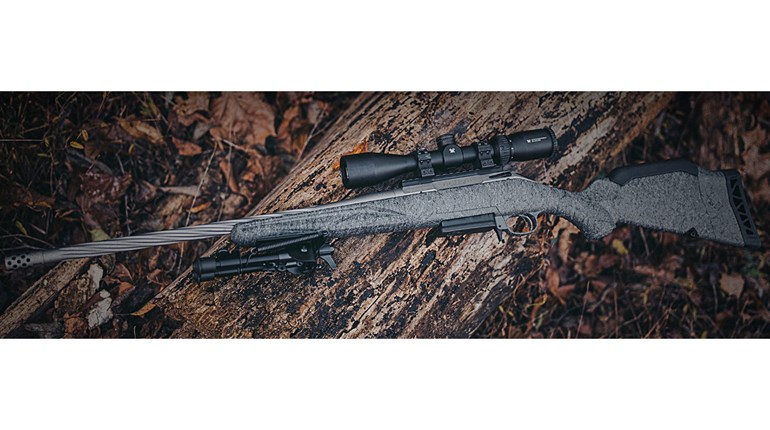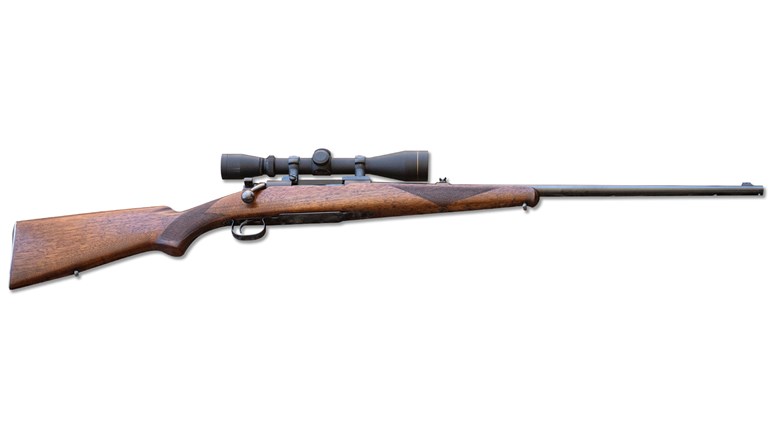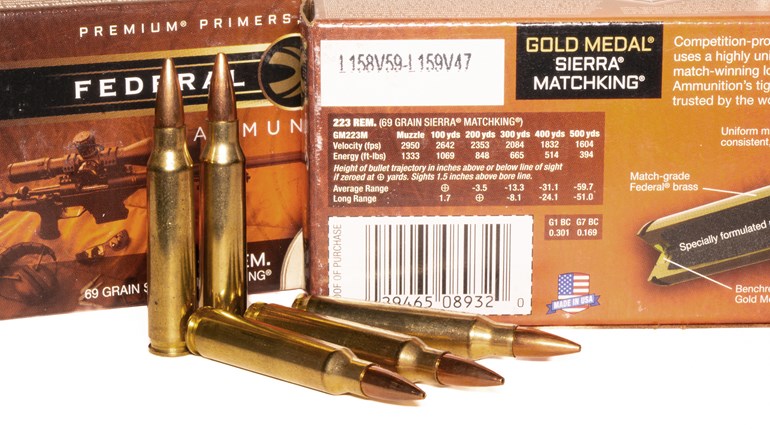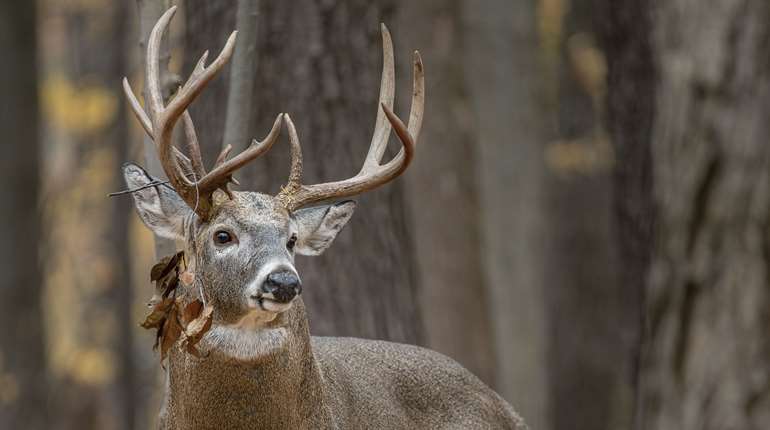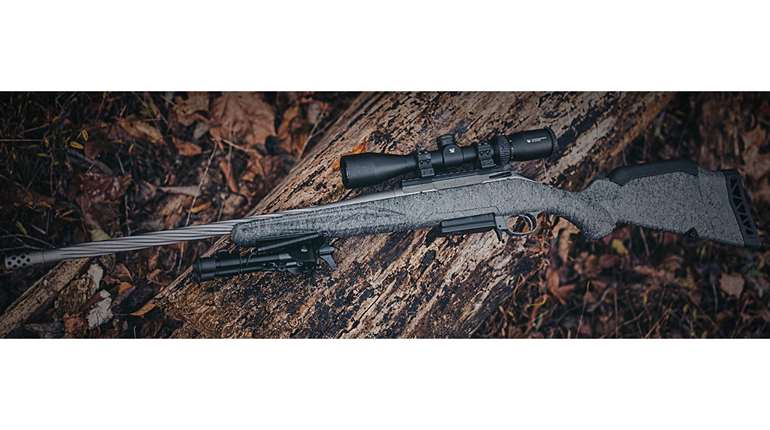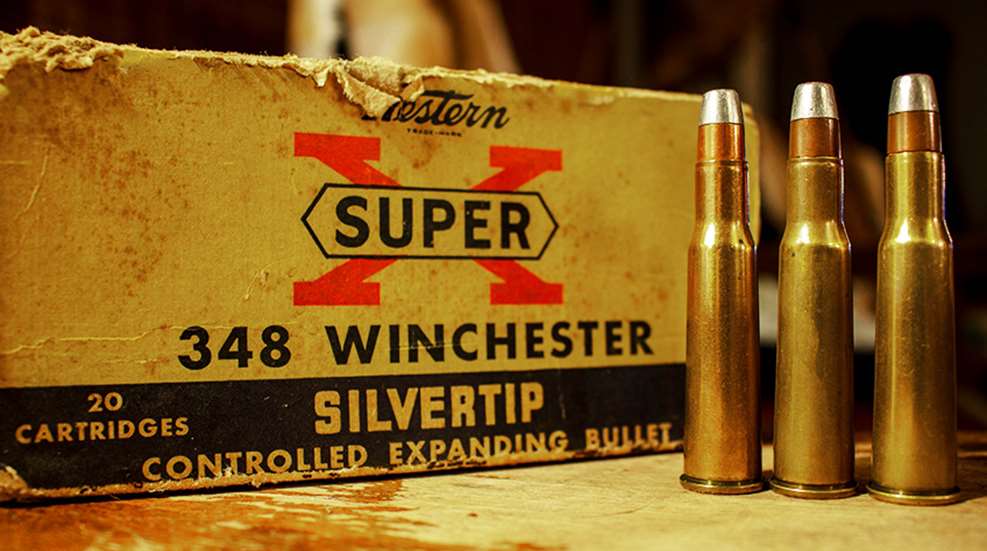
“Winchester.” There was a time, before the Model 70 had become a household name, when Winchester was synonymous with the lever-action rifle. It’s not really that difficult to imagine; there have been so many excellent models over the years that it’s tough to pick a favorite. The Model 1894—first to be chambered for the .30-30 Winchester—has sold well and continues to do so, the Model 1895 was one of Teddy Roosevelt’s favorites, the Model 1873 had a movie named after it, and the 1886 was one of the strongest lever-actions developed.
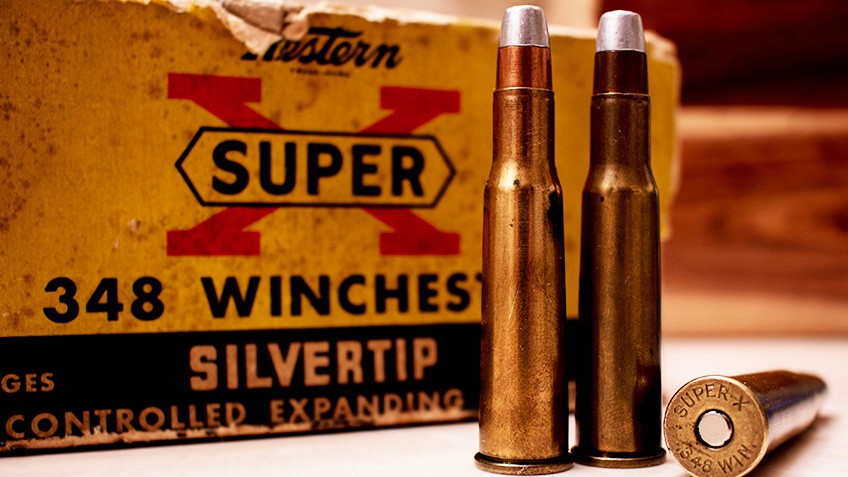
The ’86 was chambered for a number of powerful cartridges, like the .45-70 Government, .45-90 Winchester, .50-110 Winchester and the .33 Winchester. As excellent as the 1886 was, and is, it was discontinued in 1935, replaced by what many consider to be the penultimate lever-action rifle: the Model 71.
Winchester’s pair of premium rifles—the Model 70 bolt-action rifle and the Model 71 lever-action rifle—may have marked the apex of the company’s designs, and while the Model 70 would be chambered in a good number of cartridges from .22 Hornet up to the big .470 Capstick, the Model 71 would be chambered for (with a handful of exceptions) just one cartridge: the big, rimmed .348 Winchester.
Based on the .50-110 Winchester, the .348 Winchester built on the concept of the .33 Winchester; they share the same 0.610-inch rim diameter, and both use a tapered, bottlenecked case. Where the .33 Winchester was released in 1902, during the early days of smokeless powder, the .348 Winchester reared its head in 1936, after smokeless powder had a chance to evolve a bit. The Model 71 action is strong—even stronger than the 1886—and the .348 Winchester gave unprecedented velocities from a rimmed cartridge. Using a 19˚-10ʹ shoulder angle and a case measuring 2.255 inches, the .348 offered three bullet weights throughout the production of the Model 71 rifle: 150, 200 and 250 grains at a muzzle velocity of 2890, 2530 and 2350 fps, respectively. The light 150-grain bullet had a poor sectional density and was never really that popular, but the 200- and 250-grain loads worked very well against all North American big-game species.
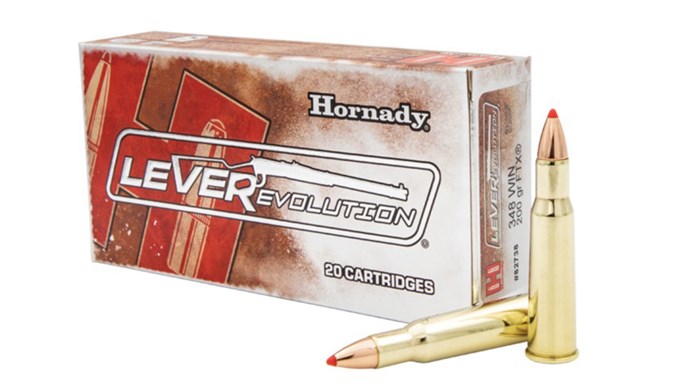
Sadly, the Model 71 rifle was discontinued in 1958—making way for the excellent Model 88 in .358 Winchester—but the ammunition continued to be offered by Winchester-Western, though by 1962, both the 150- and 250-grain loads were dropped. It was the 250-grain .348-inch bullet, with a sectional density of 0.295, that gave the .348 Winchester its excellent reputation against the larger species like brown bear and moose, though the 200-grain slug—sectional density of 0.236—worked on smaller species, including black bear and elk. Being housed in the Model 71’s tubular magazine, the .348 Winchester was limited to flat-point or round-nose bullets; the top ejection of the rifle wasn’t conducive to mounting a scope over the center of the bore, so most Model 71s remained iron-sighted affairs. Yet, within the range confines of an iron-sighted lever gun launching relatively heavy slugs, the .348 was a winner, giving muzzle energies between 2,700 and 3,100 ft.-lbs.
Though discontinued in 1958, there are still many good Model 71 rifles on the used market—including some newer rifles from Cimarron and Browning—and the cartridge remains a perfectly viable choice for nearly any game species, albeit at closer ranges. Factory ammunition can be a bit of an issue; Hornady loads their LEVERevolution line with a 200-grain FTX spitzer bullet at 2560 fps, Winchester offers a 200-grain Power-Point load, and among the big hitters, that it. Buffalo Bore, Grizzly Cartridge and Choice Ammunition are among the boutique shops which will serve the owner of a Model 71 well. For the handloader, Hornady offers new cases, Roberson Cartridge Company does, as well, and there are some excellent bullets on the market, including the 220- and 250-grain Barnes Original, the 200-grain Hornady FTX and InterLock bullets, the 250-grain Woodleigh Weldcore and the 200-grain Swift A-Frame. Quite obviously, this lineup of bullets will handle a wide variety of game animals.
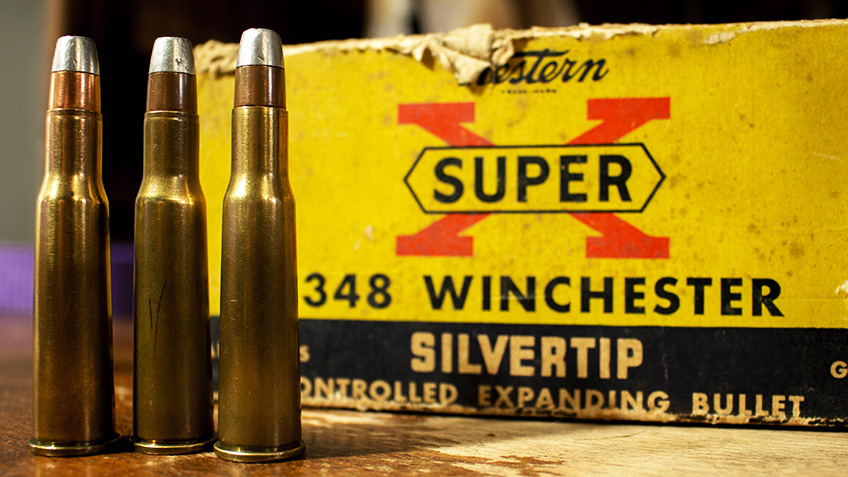
Powder choices for the .348 Winchester include IMR4064, IMR4320 and IMR4350, IMR 4166, Hodgdon H414, H4831SC and VARGET, and Accurate’s 4350; all are well-served by a large rifle primer. I’d recommend a good roll crimp, as your ammunition will be loaded in and out of the tubular magazine, with the bullet pushing the base of the cartridge ahead of it into the tube.
Is the .348 Winchester a practical choice, as far as ammunition availability and modern rifle production? Probably not, but if you find a good Model 71, it sure is fun to hunt with such a classic cartridge. The .348 Winchester gives a good balance of striking energy and moderate recoil, and among the rimmed lever-gun cartridges, possesses some impressive terminal ballistics. Of all the designs that Winchester has brought back—and Winchester, I hope you’re listening—the Model 71 in .348 Winchester would be welcomed by this author for sure.
Looking for previous installments of our "Behind the Bullet" series? We've got you covered.
• .33 Nosler
• .260 Remington
• .30-30 Winchester
• .416 Rigby
• .358 Norma Magnum
• .22 LR
• 7mm-08 Remington
• 8mm Remington Magnum
• .338 Federal
• .224 Valkyrie
• .338-06 A-Square
• 9.3x62mm Mauser
• .257 Weatherby Magnum
• .45-70 Government
• .300 H&H Magnum
• .25-06 Remington
• .30-06 Springfield
• 6.5 Creedmoor
• .300 Remington Ultra Magnum
• 7mm Remington Magnum
• .470 Nitro Express
• .280 Remington
• .300 Winchester Magnum
• .270 Winchester
• .222 Remington
• .45 ACP
• .404 Jeffery
• .44 Remington Magnum
• .41 Remington Magnum
• .243 Winchester
• .338 Winchester Magnum
• .357 S&W Magnum
• 6.5-284 Norma
• 8x57 Mauser
• .38 Smith & Wesson Special
• 7x57mm Mauser
• 9 mm Luger
• .35 Whelen
• .454 Casull
• .375 H&H Magnum
• .45 Colt
• .22-250 Remington
• 10mm Auto
• .308 Winchester












